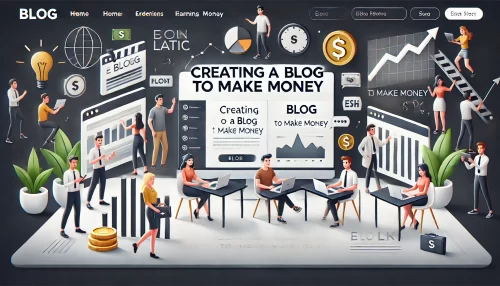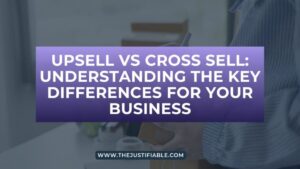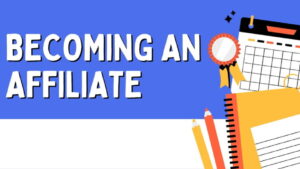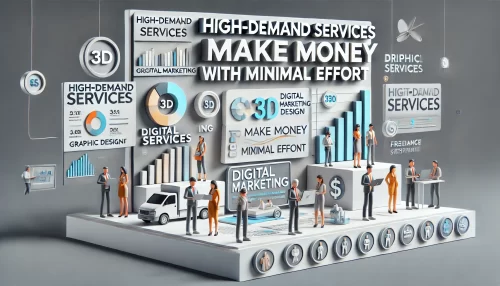Table of Contents
Ever wondered, “Can I make money blogging about my life?” With so many personal blogs finding success, it’s natural to ask if sharing your unique experiences can bring in income.
In this article, we’ll cover essential steps, strategies, and practical tips for monetizing a personal blog. Discover how to turn everyday stories into a profitable blog by using proven methods, creating engaging content, and connecting with an audience.
Understanding How Personal Blogging Earns Money

Creating a personal blog can be a rewarding way to share your life while making money. By connecting with readers authentically, personal bloggers can earn through various monetization strategies that capitalize on audience engagement and trust.
How Blogs About Daily Life Attract Readers
Personal blogs draw readers by providing relatable, real-life stories that resonate with everyday experiences. People connect with bloggers who share genuine moments, making them feel less alone. Readers often return to hear about familiar routines, personal struggles, and victories.
A daily life blog becomes a digital companion, offering readers a sense of connection. Through relatable stories, they find shared feelings or experiences. The more authentic the content, the easier it becomes for readers to feel an affinity, creating a loyal audience.
Many readers seek inspiration or comfort in others’ life experiences. Personal blogs offer insights into handling challenges, giving readers a fresh perspective. When readers feel connected to the blogger’s journey, they tend to revisit the blog.
Daily-life blogging lets you show the raw, unscripted side of life. Sharing genuine content on your journey allows you to bond with readers naturally. Readers are likely to recommend such blogs to friends, growing your audience base organically.
Why Personal Stories Build a Loyal Following
Personal stories forge connections that go beyond casual readership; they create a loyal following. When readers feel like part of a blogger’s journey, they’re more inclined to stay, comment, and engage regularly, building a community around the blog.
Blogs that focus on authenticity foster trust, which is key in building a loyal following. When readers sense that you’re being real, they appreciate the honesty and transparency. This trust often translates into more visits and higher engagement over time.
A loyal readership doesn’t form overnight; it grows as readers see consistency and authenticity. Sharing personal successes, setbacks, and lessons learned helps readers relate. Each piece of content deepens the connection, making them invested in your story.
Through a consistent voice and engaging stories, bloggers nurture a readership that feels like part of their lives. This strong connection often results in readers who actively engage with the content, share it, and support the blog through other means.
Profitable Blog Niches for Life Stories
Selecting the right niche can significantly enhance a blog’s earning potential. Lifestyle niches such as travel, wellness, and personal finance naturally attract readers and have lucrative monetization options, making them ideal for a blog centered around personal stories.
Travel blogs offer endless opportunities for storytelling and revenue. As readers follow travel journeys, they become interested in tips, product recommendations, and guides, all of which are easily monetizable. Travel stories resonate with readers seeking adventure.
Wellness is another profitable niche where personal stories have a strong impact. Sharing personal experiences with fitness, mental health, or nutrition draws readers who are looking to improve their own lives. This niche has a wide audience and many partnership options.
Personal finance blogs attract readers interested in practical advice. Sharing life experiences related to budgeting, saving, and investing provides readers with relatable, actionable content. This niche offers substantial income potential through affiliate partnerships.
Choosing a Profitable Niche for a Personal Blog
Choosing a niche is a critical step in creating a successful personal blog. Focusing on a profitable area helps attract a dedicated audience while allowing opportunities for monetization through affiliate links, sponsored content, or digital products.
Niche Ideas That Monetize Well
Certain niches have a higher monetization potential due to audience demand and diverse revenue streams. Lifestyle, health, and finance are profitable because they meet ongoing reader needs, making it easier to sustain and grow a blog’s income over time.
Lifestyle blogs cover a broad range of topics like travel, home decor, and fashion, allowing for diverse content and sponsorships. Brands are eager to work with lifestyle bloggers, which opens up numerous partnership opportunities and high earnings potential.
Health-focused blogs attract readers interested in fitness, nutrition, and wellness. By sharing personal wellness journeys, bloggers can connect with health-conscious readers. This niche offers monetization options through product endorsements and paid health programs.
Finance blogs serve a need by helping readers manage their money. Whether it’s budgeting or investing, finance blogs attract a niche audience who value practical advice. This niche offers high affiliate revenue opportunities from financial services and tools.
Combining Life Stories with High-Demand Topics
Combining personal experiences with high-demand topics broadens appeal and monetization potential. For instance, sharing travel adventures while providing destination guides or packing tips appeals to both lifestyle and travel-focused audiences.
Health and wellness blogs can benefit from blending personal stories with valuable advice. Sharing a fitness journey alongside practical workout tips attracts readers looking for motivation and actionable information, adding depth and relatability to the content.
Personal finance topics become engaging when paired with real-life budgeting tips. Sharing your experience with saving, investing, or handling debt resonates with readers, providing relatable guidance while monetizing through finance tools or affiliate programs.
Travel bloggers can enhance their content by combining life stories with destination guides. Readers enjoy following a journey while getting useful travel advice, creating content that’s both engaging and informative, boosting reader engagement and monetization.
Avoiding Oversaturation in Personal Niches
Oversaturation in popular niches can make it challenging to stand out. By focusing on a unique angle or specific aspect of a niche, personal bloggers can carve out a distinctive space, attracting readers interested in a fresh perspective or specific expertise.
Finding a unique voice is key in a crowded niche. Whether through humor, storytelling, or a personal twist, creating content that reflects a unique personality draws readers who connect with your distinct approach, making the blog memorable in a saturated space.
Narrowing your focus within a niche can make content more appealing to a targeted audience. For example, a wellness blog focused specifically on mental health strategies may attract a dedicated readership looking for that particular expertise.
Experimenting with different content types, such as videos or podcasts, can help a blog stand out. Adding variety offers readers new ways to engage and can draw in audiences from platforms beyond traditional blog posts, enhancing visibility in a crowded market.
Monetization Strategies for Lifestyle Blogs

Lifestyle blogs offer diverse ways to earn income through engaging and value-driven content. These monetization strategies, tailored for personal blogs, can help transform an audience’s interest into profitable income streams, effectively monetizing a lifestyle blog.
Affiliate Marketing on Personal Blogs
Affiliate marketing is a popular way to monetize a personal blog by promoting products. You earn a commission each time a reader purchases through your referral link. I suggest starting with products you genuinely use and trust.
By recommending products you believe in, readers feel a sense of trust and are more likely to buy. Authenticity is key; promote products that align with your lifestyle blog’s theme, making affiliate links feel like natural recommendations to your audience.
Including affiliate links within content that highlights their benefits, like in product reviews or tutorials, boosts earnings. I find that this method combines organic storytelling with affiliate promotions, making the blog post valuable and profitable.
Don’t overwhelm posts with too many affiliate links. I recommend keeping them subtle and relevant, so they enhance rather than disrupt the reading experience. This balance ensures the blog remains engaging while supporting income goals.
Sponsored Content Opportunities
Sponsored content is another monetization method where brands pay you to feature their products. This approach works well when your audience aligns with the brand’s target market. I advise reaching out to brands that resonate with your blog’s vibe.
Creating sponsored content feels genuine when it fits naturally within your blog’s focus. For example, lifestyle bloggers often partner with brands in fashion, wellness, or home decor, showcasing products that their readers are already interested in.
When readers see that you genuinely use a sponsored product, it builds credibility. I suggest sharing personal stories or experiences to make sponsored posts relatable. This adds value for both readers and the partnering brand, creating a win-win.
To keep content authentic, limit sponsored posts so they don’t dominate your blog. Mixing in organic posts helps maintain trust with your audience, showing that your blog is about sharing quality content, not just promoting products for profit.
Offering Digital Products or Ebooks
Digital products, like eBooks or guides, allow bloggers to monetize by selling expertise. Creating something valuable, like an eBook on a relevant topic, gives readers practical insights while generating income. I recommend starting with a topic you know well.
Digital products align with your audience’s interests, whether it’s a travel guide, recipe book, or fitness plan. When readers trust your expertise, they’re more inclined to buy your products, making this a personalized way to monetize a lifestyle blog.
To make an eBook appealing, include real-life examples or tips. I suggest focusing on areas where you’ve achieved results or unique insights, offering readers actionable advice they won’t find elsewhere, which enhances perceived value.
Creating a digital product once can lead to ongoing income without additional work. This passive income stream suits bloggers who want long-term earnings while focusing on content creation, adding value to both readers and revenue.
Implementing Display Ads for Revenue
Display ads are a straightforward way to generate income, especially as your blog’s traffic grows. Networks like Adsterra allow you to place ads on your blog, earning revenue based on impressions or clicks. I suggest starting with simple ad placements.
Careful placement of ads keeps the reading experience smooth. Ads at the top or within content breakpoints work well without feeling intrusive. With the right balance, ads can be profitable without overwhelming the blog’s visual appeal.
Higher traffic means greater ad revenue, making SEO efforts important. I advise focusing on SEO strategies that increase organic traffic, as more visitors lead to higher impressions and, consequently, more ad income.
Ad performance varies depending on placement and reader interaction. Regularly monitor metrics and adjust ad positions to optimize income without sacrificing reader experience. Experimenting helps find the sweet spot for maximizing ad revenue.
Building and Selling an Email List
An email list allows you to communicate directly with readers, offering a personal way to monetize. You can sell exclusive content, courses, or eBooks through email campaigns. I recommend growing your list with quality sign-up incentives.
Regular, value-driven emails strengthen connections with readers. Offering exclusive insights or tips builds trust, making readers more receptive to product offers. This approach helps monetize while creating a deeper audience relationship.
To attract subscribers, offer a valuable freebie, like a checklist or guide. I suggest tailoring freebies to reader interests, ensuring they’re aligned with your blog’s focus. This way, new subscribers are more likely to stay engaged.
Selling to an engaged email list feels natural. Instead of hard selling, focus on delivering value, showing how your products solve specific problems. I advise blending product promotion with free, helpful content for balanced, effective emails.
Crafting Engaging Content That Sells
Content that resonates emotionally with readers is key for driving sales. Through storytelling and targeted advice, lifestyle bloggers can connect deeply, creating posts that aren’t just informative but inspire action, whether it’s a purchase or regular readership.
Storytelling Techniques for Connection
Storytelling is powerful because it humanizes content, making readers feel connected. Sharing personal experiences around the topic draws readers in. I find that stories give content life, turning information into relatable experiences.
When sharing stories, focus on emotions. I recommend emphasizing how experiences made you feel, as this creates an emotional bridge with readers. People are more likely to engage with content that evokes a personal response.
Relatable stories strengthen bonds, making your blog memorable. For instance, sharing a struggle or achievement invites readers to reflect on their own experiences. This connection keeps readers coming back, seeing your blog as an ongoing journey.
I suggest structuring stories with a clear beginning, middle, and end, keeping them concise yet impactful. A well-told story holds attention, making readers eager for more, turning casual visitors into loyal followers over time.
Creating Content That Solves Real-Life Problems
Content that addresses real-life challenges holds value, as readers seek actionable advice. Focus on topics that resonate with your audience’s needs. I suggest researching common issues in your niche, ensuring your content offers practical solutions.
Offer specific steps or tips within each post. Readers appreciate clear, actionable advice. I believe that providing a step-by-step approach builds credibility, showing readers that you genuinely want to help them achieve positive results.
Personal experiences add credibility. Sharing how you overcame similar challenges makes your advice more relatable and trustworthy. I advise sprinkling in these personal insights to humanize advice and make readers feel understood.
End with encouragement or practical next steps. This approach empowers readers to take action, feeling supported by someone who has been in their shoes. It’s a personal touch that reinforces the blog’s value, keeping readers engaged.
Power of Visuals in Personal Blogging
Visuals play a crucial role in enhancing a blog’s appeal, breaking up text while adding depth to stories. Photos, graphics, or videos engage readers on a visual level. I recommend using high-quality images to create a polished, inviting look.
Images amplify your storytelling. For example, travel blogs benefit from location photos, making readers feel they’re part of the journey. Incorporating visuals where relevant enhances the content’s impact and keeps readers visually engaged.
Graphics and infographics add value, especially for educational content. Readers understand complex topics faster with visual aids. I suggest using visuals to simplify information, making the blog more informative and user-friendly.
Videos add personality, allowing readers to see and hear you directly. This form of connection is impactful, as it shows a real person behind the blog. I advise integrating videos to make readers feel more personally connected to your journey.
Consistent Posting to Build Trust
Consistency is crucial in building reader trust, as regular posting keeps readers engaged. I suggest setting a posting schedule that aligns with your capacity, ensuring a steady flow of content that readers can rely on.
Frequent posts show dedication, helping readers view your blog as a credible resource. I believe that consistent publishing not only grows readership but also reinforces your commitment to delivering valuable content.
A regular schedule enhances SEO by keeping content fresh. Search engines favor updated sites, so posting consistently can improve your visibility. This helps attract new visitors, growing your audience base over time.
Consistency is key for nurturing loyal readers. When readers know they can expect new content, they’re more likely to return. I recommend building a realistic schedule to keep engagement steady, fostering long-term relationships with your audience.
Building a Loyal Audience to Boost Income

Creating a loyal audience is essential for long-term success in blogging. A dedicated readership not only boosts engagement but also increases income potential as these readers are more likely to support and invest in your content.
Using Social Media to Reach Wider Audiences
Social media is a powerful tool for connecting with a broader audience. By sharing your blog posts and personal stories, you attract followers who share similar interests. I recommend focusing on platforms where your target readers are most active.
Building a presence on social media allows you to interact directly with readers, enhancing your blog’s visibility. Sharing relatable moments from daily life on Instagram or Facebook can encourage engagement and bring more visitors to your blog.
Consistent social media posting establishes trust. When followers see regular content updates, they’re more likely to visit your blog. I suggest posting at peak times to maximize visibility, helping your blog content reach a larger audience naturally.
Social media also offers insights into reader preferences. By monitoring engagement, you learn what resonates most. I advise adjusting your content based on these insights, allowing you to create blog posts that better match audience interests.
Engaging with Readers Through Comments and Emails
Reader engagement builds connection, making readers feel valued. Responding to comments or emails shows that you care about their input. I suggest setting time aside weekly to reply thoughtfully, strengthening relationships and boosting loyalty.
Through comments, readers often share valuable feedback or ask questions. These interactions provide insights into what readers enjoy, enabling you to tailor content to their needs. I find that engaging personally with readers fosters trust and deepens loyalty.
Email communication offers a direct channel to engage loyal readers. Regular newsletters with exclusive updates keep them connected. I recommend adding personal touches, like sharing behind-the-scenes stories, making subscribers feel part of your journey.
Engaging with readers creates a sense of community around your blog. This personal touch turns casual visitors into loyal supporters who trust your recommendations, increasing your blog’s income potential through repeat visits and engagement.
Collaborating with Other Bloggers for Growth
Collaborations expand your audience by connecting you with another blogger’s readership. Partnering on projects, like guest posts or joint social media takeovers, can introduce your blog to new readers. I suggest reaching out to bloggers in complementary niches.
Working with others brings fresh perspectives to your content. For instance, a guest post can provide unique insights, keeping your blog dynamic. I advise choosing collaborators who align with your blog’s tone and values to keep content cohesive.
Collaboration can also help with SEO. When a collaborator links back to your blog, it improves your blog’s visibility. These backlinks signal quality to search engines, helping attract new visitors and potentially increasing your blog’s ranking.
Collaborating creates a sense of camaraderie within the blogging community. Building these relationships not only boosts exposure but also fosters professional connections, offering you valuable support as you grow your blog.
Hosting Webinars or Q&A Sessions
Hosting webinars or live Q&A sessions lets you interact with readers in real time. This personal engagement builds trust, as readers see you as an approachable resource. I recommend focusing on topics that interest your readers the most.
Webinars offer an opportunity to share in-depth insights on specific topics. I suggest using these sessions to expand on popular blog posts, adding exclusive value. This approach positions you as an expert, encouraging viewers to return to your blog.
Q&A sessions allow readers to ask questions directly, creating a strong personal connection. Answering queries in real-time shows readers you’re invested in their learning, fostering a supportive community that values your blog’s content.
These live interactions often create lasting impressions. Readers who participate are more likely to stay engaged, helping boost long-term loyalty. I find that webinars and Q&A sessions are excellent tools for building a dedicated audience.
Leveraging SEO for Increased Traffic
SEO is essential for driving traffic to your blog. Implementing effective SEO techniques helps search engines recognize and rank your blog, increasing visibility. I suggest focusing on fundamental SEO practices to ensure steady, organic growth.
Basic SEO Techniques for Personal Blogs
Basic SEO techniques include keyword optimization, meta descriptions, and alt text for images. These steps make your blog more accessible to search engines, helping readers find your content. I recommend starting with primary keywords that align with each post’s topic.
Creating engaging meta descriptions attracts clicks from search results. This brief summary should highlight the post’s main value. I suggest keeping it concise but informative, ensuring it clearly explains what readers will gain from your post.
Using alt text for images improves accessibility and SEO. Alt text describes an image’s content, helping visually impaired readers understand your visuals. I advise writing specific descriptions to enhance SEO while making your blog more inclusive.
Internal linking guides readers to related posts, increasing time on your blog. It also signals structure to search engines, improving SEO. I recommend linking to at least two other posts within each new article to enhance navigation and engagement.
Using Long-Tail Keywords in Lifestyle Blogging
Long-tail keywords capture specific search intents, often with lower competition. These phrases help your blog rank for targeted queries. I suggest focusing on long-tail keywords that reflect your audience’s unique interests, enhancing your content’s reach.
Long-tail keywords align closely with reader queries. Using them makes your posts appear when readers search for specific answers. I believe that integrating long-tail phrases naturally into headings and content boosts visibility for niche topics.
Identifying long-tail keywords can be easy with tools like Google’s Keyword Planner. I suggest researching phrases that describe your content accurately. Using these terms strategically attracts readers who are more likely to find your content relevant.
Targeted keywords also improve conversion rates, as visitors find exactly what they’re looking for. I advise blending primary and long-tail keywords for balanced SEO, making your blog posts appealing to a specific audience without feeling forced.
Writing Search-Optimized Content without Losing Voice
Writing for SEO doesn’t mean sacrificing your unique voice. Blending natural language with keywords keeps the content engaging. I recommend focusing on readability first, incorporating keywords only where they add value without sounding forced.
Your voice keeps readers engaged, making your blog memorable. I suggest writing conversationally, as if speaking to a friend, ensuring your style remains authentic. This approach creates a welcoming tone that complements SEO goals effectively.
Balancing SEO with your voice requires moderation. Keywords should support, not overpower, the content. I advise placing them in headings and naturally within paragraphs, avoiding repetition. This balance keeps the writing clear and enjoyable to read.
Personal stories are a great way to humanize SEO-driven content. Including real experiences helps readers relate to your insights, making the blog feel personable. This method connects with readers while still meeting SEO requirements effectively.
Analyzing SEO Data for Better Performance
Analyzing SEO data helps you understand what’s working and where improvements are needed. I suggest using tools like Google Analytics to track page views, bounce rates, and user behavior, providing insights into your blog’s strengths and areas for growth.
Bounce rates reveal how well a post engages readers. High bounce rates may indicate irrelevant content or weak engagement. I advise revisiting posts with high bounce rates, ensuring they align with reader expectations and improve engagement.
Page views help you track content popularity. Posts with higher views show what resonates with your audience. I suggest creating similar content to build on these successes, enhancing your blog’s appeal to both new and returning readers.
Keyword performance data guides future content creation. Knowing which keywords attract traffic lets you refine your SEO strategy. I recommend focusing on successful keywords to create new posts, ensuring consistent relevance and visibility.
Analyzing Earnings Potential in Personal Blogging

Understanding your blog’s earnings potential is crucial for setting realistic goals. By analyzing revenue streams, costs, and growth rates, you gain a clearer picture of the financial journey ahead. This process helps shape your blogging strategy for sustainable income.
Expected Income from Different Revenue Streams
Income from personal blogging varies based on revenue streams like affiliate marketing, ads, and sponsored content. Affiliate links often yield commissions based on product sales. I suggest choosing products relevant to your audience for better conversions.
Sponsored posts typically pay a fixed fee, depending on blog traffic and niche. As your audience grows, brands may offer higher payments for featuring their products. I recommend partnering with brands that align well with your blog’s theme.
Display ads can provide steady income, especially with high blog traffic. While each ad’s payout may be small, collectively, they can add up. I believe that focusing on SEO to increase traffic will improve ad revenue significantly.
Offering digital products, like eBooks or guides, generates passive income. Creating one product can lead to recurring earnings without additional work. I suggest identifying topics where readers seek advice, maximizing value and revenue from these products.
Balancing Income with Blogging Costs
To assess profitability, compare income against blogging expenses. Costs include domain fees, hosting, and marketing tools. I recommend budgeting for these essentials, as they ensure your blog runs smoothly and remains professional.
Some costs, like email marketing services or SEO tools, can grow with your blog’s needs. Investing in tools can streamline processes, boosting productivity. I believe prioritizing essentials over luxuries helps you manage expenses while maintaining quality.
Keeping a detailed record of monthly expenses clarifies where funds go. Tracking each cost helps you identify areas for saving. I advise reviewing these expenses quarterly, ensuring your budget aligns with the blog’s revenue growth.
Profitability improves as income surpasses costs. Setting income goals helps measure progress toward covering expenses. I suggest setting realistic, incremental targets, which boosts motivation and provides clarity in your blog’s financial journey.
Tracking Monthly Earnings and Growth
Monitoring monthly income and growth provides valuable insights into your blog’s financial health. Tracking earnings helps identify trends, revealing which strategies work best. I suggest using a simple spreadsheet to keep your data organized and accessible.
Consistent tracking shows how each revenue stream performs. You’ll spot seasonal trends, like higher ad revenue during holidays, helping you plan. I believe that understanding these patterns allows you to adapt content and marketing efforts proactively.
Comparing monthly earnings offers insight into your blog’s growth rate. Seeing steady income increases boosts confidence in your strategy. I advise using these insights to refine your approach, reinforcing the strategies that drive the most revenue.
Tracking also highlights underperforming areas. If a revenue stream consistently falls short, you can decide whether to optimize it or explore new options. I recommend being flexible with your approach, adapting to changes in reader preferences and revenue sources.
Realistic Timelines for Making Profits
Making profits through blogging requires patience and realistic timelines. Initial months may yield little income, as building an audience takes time. I suggest setting milestone goals to track progress without feeling discouraged by slower earnings.
For many, six months to a year is common before seeing consistent income. This period allows for audience growth, SEO improvements, and content refinement. I believe a steady posting schedule during this time supports long-term profitability.
Income growth varies by niche and monetization strategy. Lifestyle or finance blogs may generate income sooner due to high advertiser demand. I advise researching your niche’s earning potential to set informed, achievable goals for your blog.
With persistence, income often compounds as traffic and engagement increase. Realistic expectations help you stay motivated. I suggest viewing your blog as a long-term project, where effort pays off gradually rather than immediately.
Avoiding Common Pitfalls in Monetizing a Lifestyle Blog
To ensure steady growth, it’s crucial to sidestep common mistakes when monetizing a lifestyle blog. Recognizing these pitfalls helps maintain authenticity, build reader trust, and create a sustainable income model without alienating your audience.
Mistakes That Hinder Blogging Income
Excessive ads or frequent sponsored posts can detract from content quality, pushing readers away. I recommend balancing monetization with valuable, organic content, so your blog remains engaging and readers feel valued, not just marketed to.
Neglecting SEO hinders organic growth. Without proper optimization, search engines struggle to recognize your content. I believe implementing basic SEO strategies, like using relevant keywords, improves visibility, helping more readers find your blog.
Focusing only on high-paying offers can lead to mismatched partnerships. Collaborating with unrelated brands weakens your blog’s credibility. I suggest prioritizing partnerships that align with your values, ensuring they resonate with your audience.
Overlooking engagement metrics, like bounce rates, limits your ability to gauge success. These insights show how readers interact with content. I advise reviewing these metrics monthly, making adjustments that enhance reader experience and retention.
Understanding Audience Needs Over Self-Promotion
Placing reader needs above self-promotion builds loyalty. When content focuses solely on sales, readers may lose interest. I suggest creating value-driven posts that solve real problems, establishing trust and encouraging regular visits.
Personalizing content helps readers feel understood. Relating to their challenges or sharing relatable stories shows empathy. I believe that genuinely connecting with readers fosters long-term loyalty, as they see your blog as a supportive resource.
Reader feedback is invaluable. Encouraging comments or survey responses reveals what they want more of, guiding content decisions. I recommend paying close attention to this feedback, as it helps tailor content to fit their expectations.
Balancing promotion with helpful content ensures your blog doesn’t feel overly commercialized. Offering insights, tips, or relatable stories within promotional posts keeps readers engaged, maintaining a friendly, inviting tone while generating income.
Staying Consistent Amidst Slow Growth
Blog growth can be slow initially, but consistency is key to long-term success. Regular posting builds a routine that readers rely on, strengthening their connection to your blog. I suggest committing to a schedule that fits your capacity and goals.
Consistency also improves SEO by signaling content freshness to search engines. Frequent updates keep your blog active, helping boost rankings. I believe setting a realistic posting frequency ensures you maintain quality and engagement over time.
Staying focused despite slow growth is challenging. I advise setting incremental milestones to measure progress, reminding yourself that each step contributes to future growth. Celebrating small wins keeps motivation strong through quieter periods.
Success often comes from perseverance. The journey may feel slow, but each post strengthens your blog’s foundation. I recommend viewing consistency as a key to unlocking future growth, knowing each effort brings you closer to your goals.
Scaling Up Your Blog for Higher Earnings

To increase earnings, scaling up involves expanding content, reaching broader audiences, and refining your unique blogging voice. Each of these steps brings new growth opportunities, helping you maximize the income potential of your blog over time.
Expanding Content Types for Greater Reach
Diversifying content types attracts new readers. Adding videos, podcasts, or infographics enhances engagement and keeps content fresh. I suggest experimenting with formats that resonate with your audience, providing value in diverse, enjoyable ways.
Videos offer an engaging way to present content, giving readers a chance to see you directly. Incorporating video tutorials or live chats builds stronger connections, making your blog more interactive and appealing to a wider audience.
Podcasts are perfect for sharing insights in an easy, accessible format. They reach readers who prefer audio content, expanding your audience. I advise using podcasts for interviews or discussions, offering listeners added value alongside traditional blog posts.
Infographics make information visually appealing and digestible. They’re highly shareable, drawing new readers from social media. I recommend creating infographics for data-heavy posts, as they simplify complex information, making it more engaging and shareable.
Using Paid Advertising to Drive Traffic
Paid ads can boost blog traffic quickly, introducing your content to new audiences. Using platforms like Adzooma allows for targeted promotion. I recommend setting a budget to test ads, tracking performance closely.
Social media ads target specific demographics, ensuring your blog reaches people interested in your niche. Ads on Instagram or Facebook allow precise audience targeting. I suggest starting with small campaigns, refining as you identify what works best.
Adzooma reach audiences actively searching for related topics, drawing in engaged visitors. Promoting high-value posts or product pages works well on search ads. I find that focusing on valuable content increases conversion, making each click worthwhile.
Monitoring ad performance reveals what resonates with viewers. Tracking click-through rates and conversions helps you adjust strategies. I advise continuously refining ads based on performance data, ensuring optimal reach and effective spending.
Transitioning to Full-Time Blogging Income
Turning blogging into a full-time income source requires strategic planning. Building multiple revenue streams like affiliate marketing, sponsored posts, and digital products diversifies income. I suggest focusing on reliable streams to support consistent earnings.
Setting specific income goals keeps you motivated and aligned with financial targets. Establishing monthly or quarterly goals helps track progress and guides income strategies. I recommend aiming for gradual increases, building a sustainable income base.
Time management is essential. Full-time blogging involves balancing content creation with marketing, SEO, and partnerships. Structuring your schedule effectively can prevent burnout, keeping you productive. I suggest dedicating time to each aspect consistently.
Building financial stability through blogging takes patience. With steady growth and diverse income streams, full-time income becomes achievable. Viewing blogging as a business supports longevity, making each step intentional toward financial independence.
Developing a Unique Voice to Stand Out
A unique voice makes your blog memorable and relatable. Readers return to blogs with a distinct personality, enjoying the content’s authenticity. I suggest focusing on a tone that reflects your personality, creating a consistent, engaging voice.
Personal anecdotes make content relatable, helping readers connect on a personal level. Sharing experiences adds depth to your insights, reinforcing your blog’s authenticity. I advise incorporating personal stories where they add value to the reader’s experience.
Staying true to your values strengthens your voice. Avoiding trendy language that doesn’t align with your tone keeps your blog authentic. I believe that consistency in tone and values creates a strong brand readers can trust.
Developing a unique voice requires practice. Experimenting with different styles helps find what resonates best with readers. I suggest listening to reader feedback, refining your voice to meet their expectations while staying genuine and approachable.
Final Steps to Monetize Your Lifestyle Blog Successfully
Completing your monetization strategy involves setting goals, reassessing strategies, and nurturing audience relationships. These steps help sustain your blog’s income potential, creating a stable, rewarding blogging journey that aligns with your goals.
Setting Income Goals for Continued Motivation
Income goals provide focus and motivation. Establishing realistic milestones for monthly or annual earnings gives direction to your efforts. I recommend setting incremental goals that encourage progress, keeping you motivated through each stage of growth.
Tracking progress against income goals shows what’s working and highlights areas for improvement. Reviewing earnings helps refine strategies, maximizing successful efforts. I believe that tracking helps stay aligned with your financial aspirations consistently.
Setting stretch goals encourages growth beyond the basics. These ambitious targets push you to explore new income streams or increase traffic. I suggest setting stretch goals alongside regular ones, creating room for additional progress and innovation.
Celebrating milestones boosts motivation. Recognizing each achievement, however small, keeps spirits high and encourages continued effort. I find that small rewards for reaching goals help maintain enthusiasm and make the journey enjoyable.
Reassessing Content and Strategies Periodically
Reevaluating content ensures it aligns with audience interests and SEO trends. Regularly updating old posts improves relevancy and user experience. I recommend revisiting top-performing posts quarterly to keep content fresh and useful to readers.
Shifting strategies based on audience feedback or analytics keeps the blog relevant. If a topic gains interest, expanding on it attracts more readers. I advise letting reader feedback guide content changes, ensuring your blog stays in tune with their needs.
Assessing SEO metrics helps refine approaches for organic growth. Keyword trends may shift, requiring updates to improve ranking. I suggest tracking keyword performance, adapting content as trends evolve, helping your blog maintain visibility.
Refreshing visual elements or design improves user experience. A modern, easy-to-navigate layout increases engagement. I believe regular updates to design and layout make your blog more inviting, enhancing reader satisfaction and retention.
Building Stronger Audience Relationships for Recurring Income
Audience relationships foster loyalty, turning readers into repeat visitors. Engaged readers are more likely to support monetization efforts like purchases or subscriptions. I recommend interacting personally, creating a welcoming environment for returning readers.
Offering exclusive content to loyal readers, like newsletter insights, deepens connections. Exclusive content adds value beyond regular posts, making readers feel valued. I suggest sending personalized emails to subscribers, encouraging stronger connections.
Encouraging feedback makes readers feel involved. Ask readers for suggestions on content ideas, showing you care about their interests. I believe this inclusion strengthens loyalty, as readers appreciate feeling part of the blog’s direction.
Consistency in engagement builds long-term relationships. Regular interactions through comments, emails, or social media help readers feel connected. I recommend dedicating time to connect, making readers feel valued as integral parts of your blog’s community.






